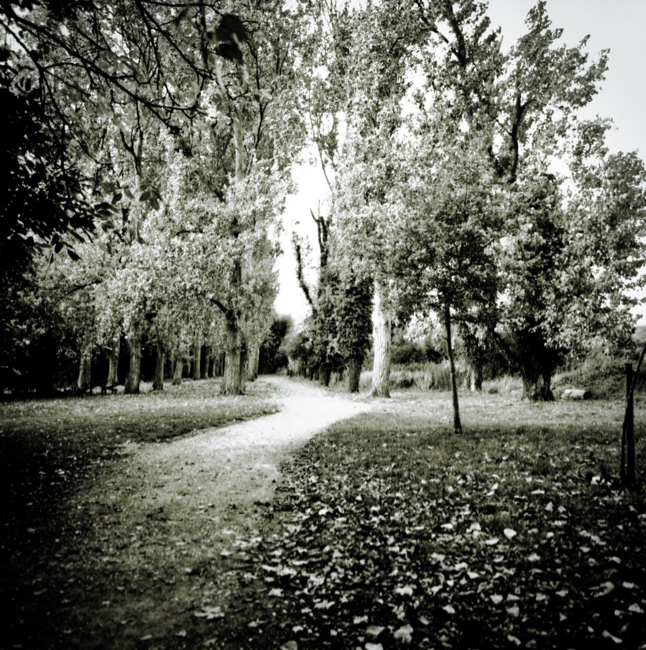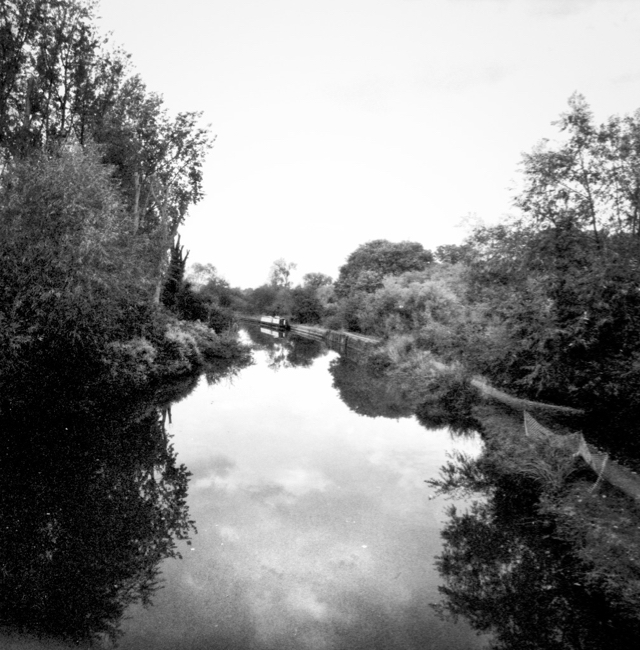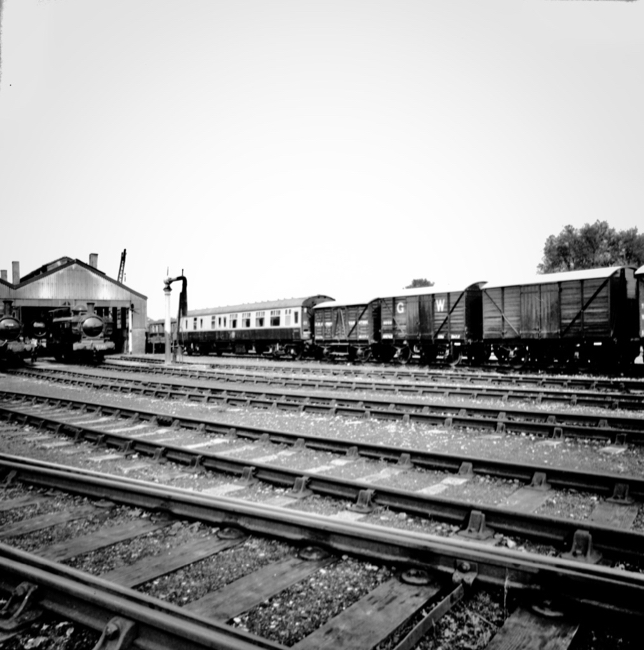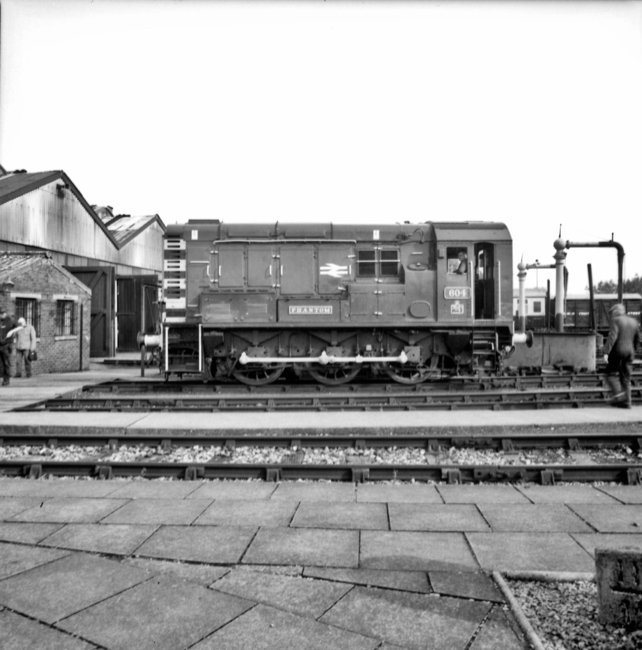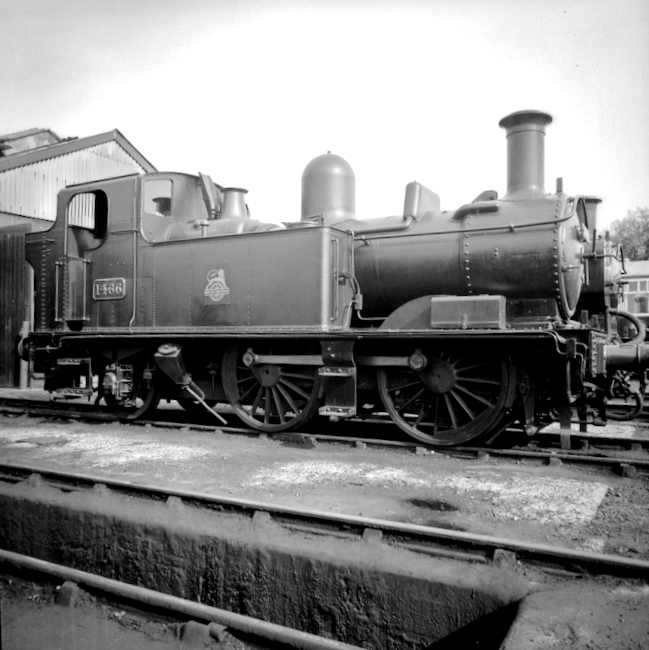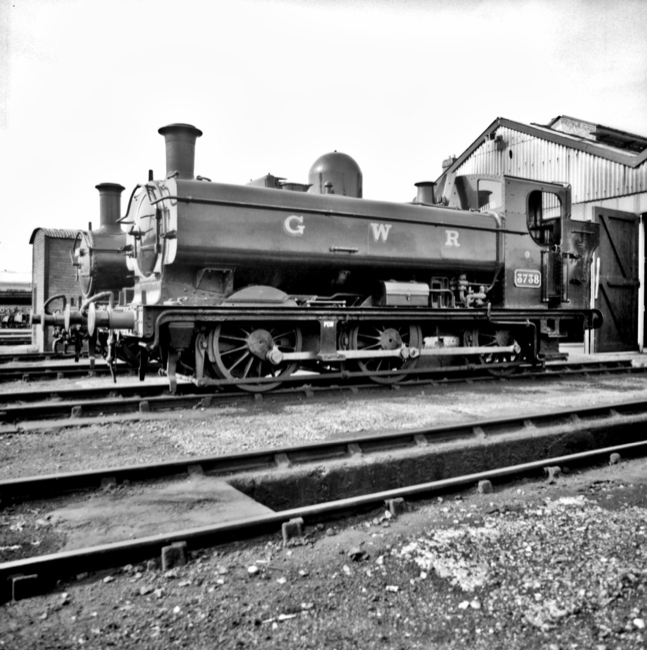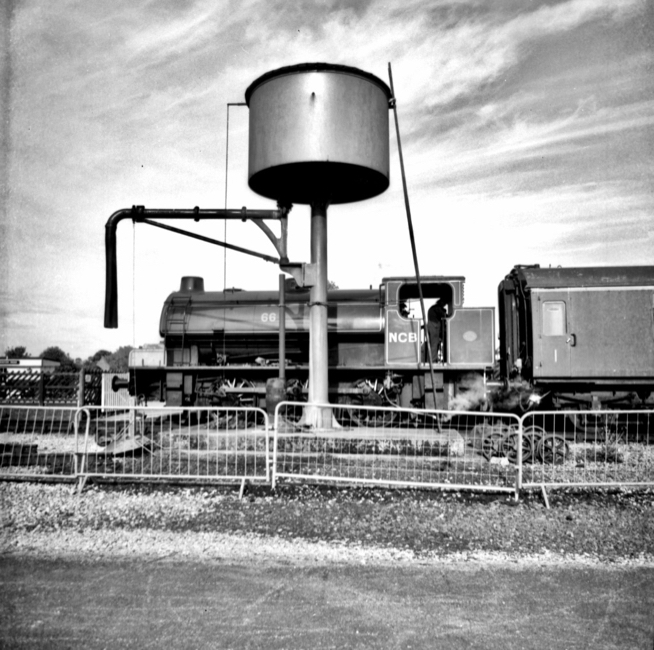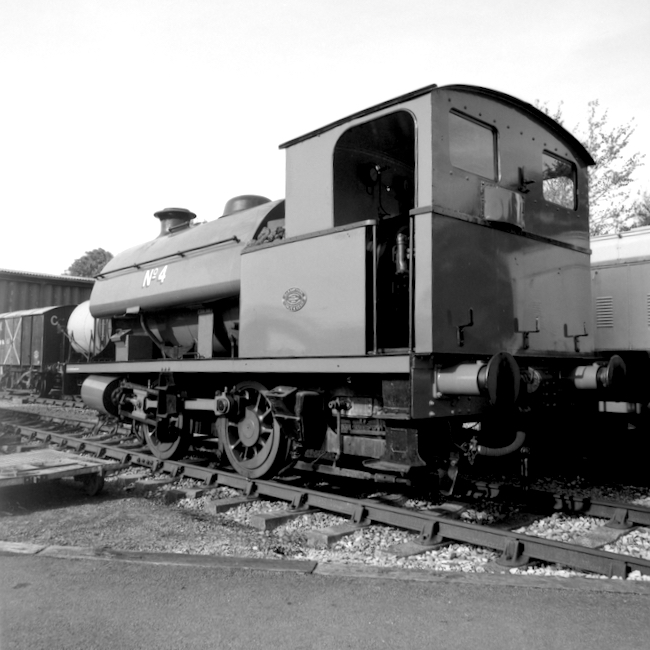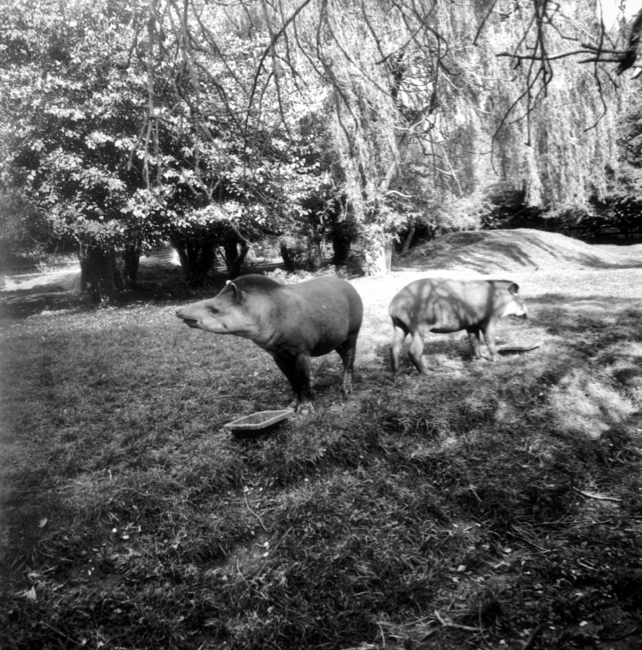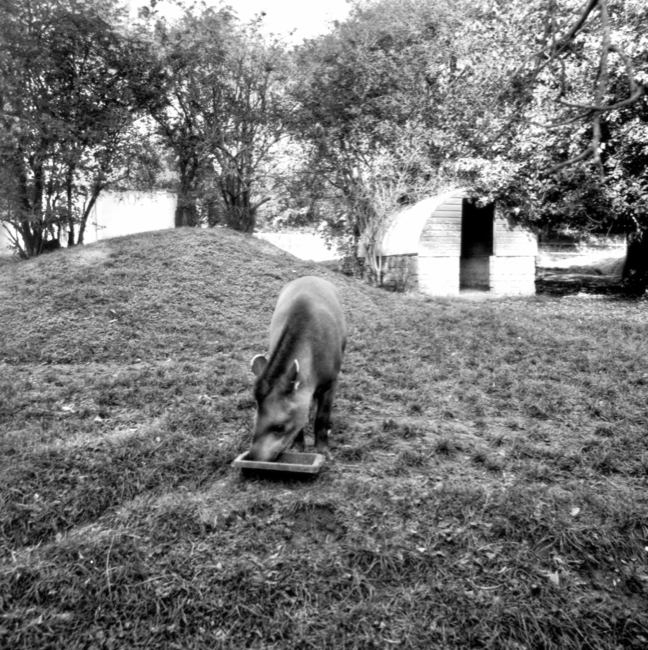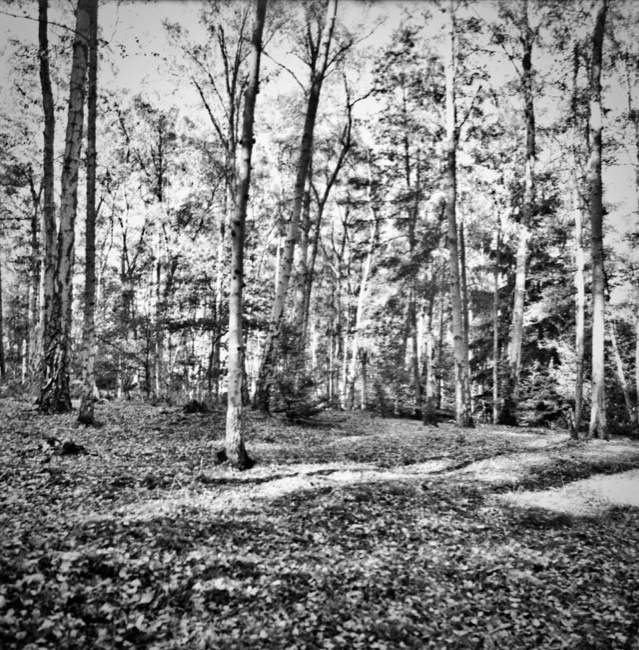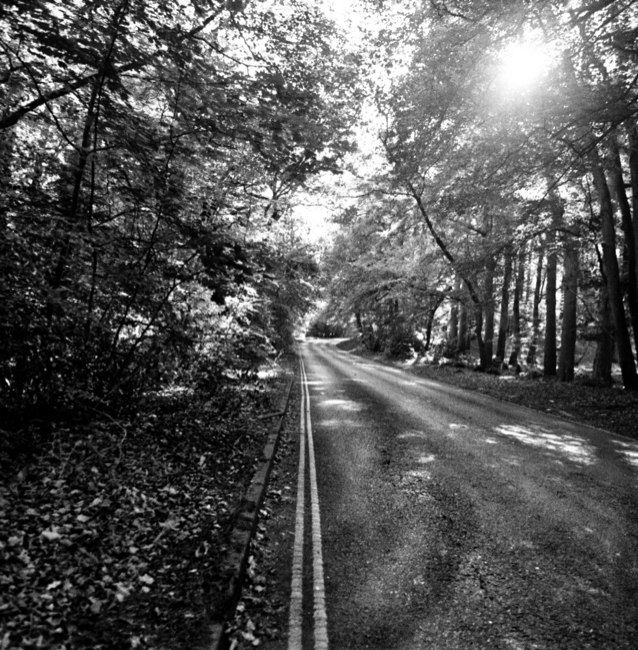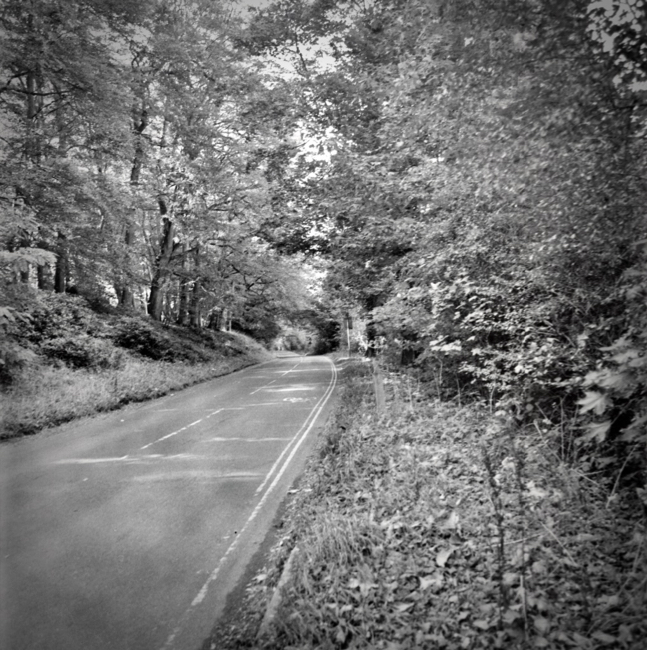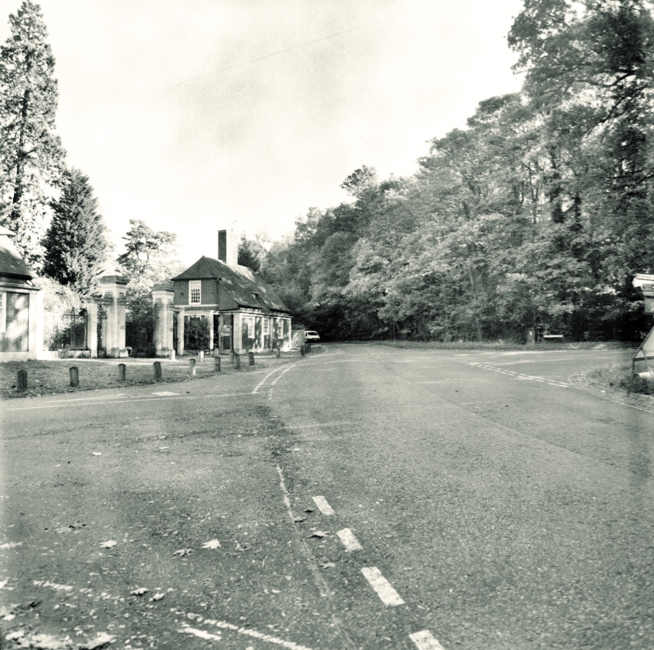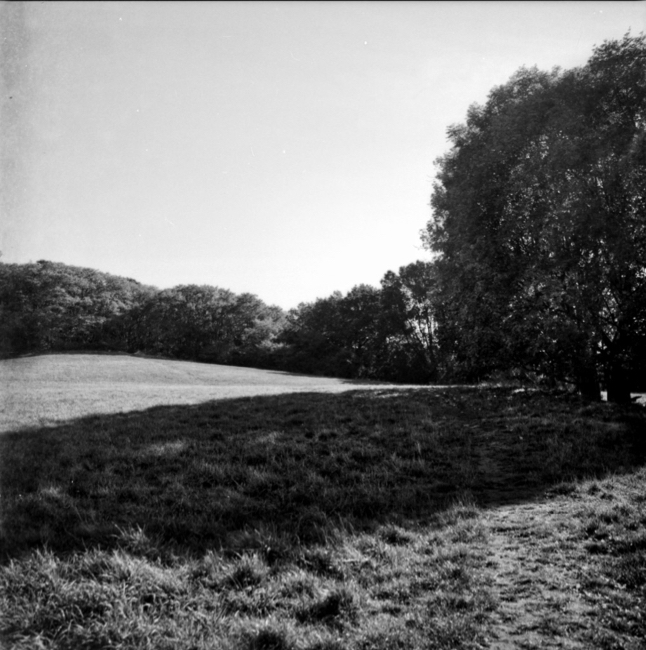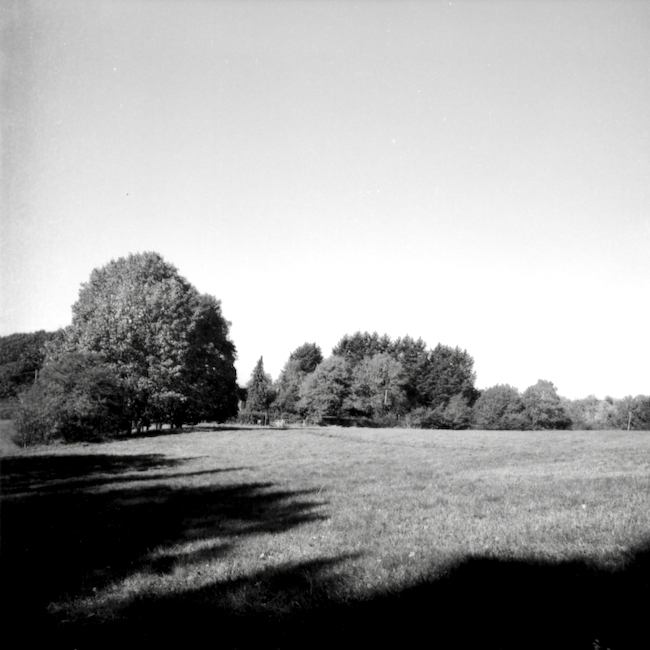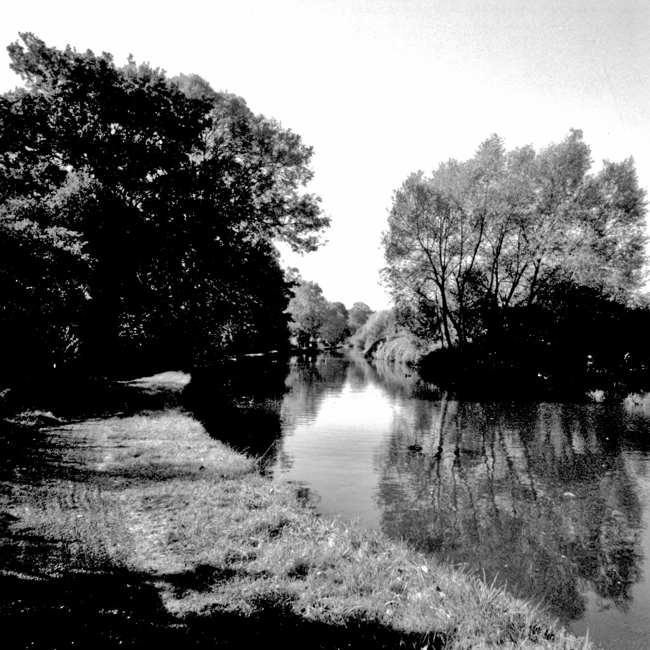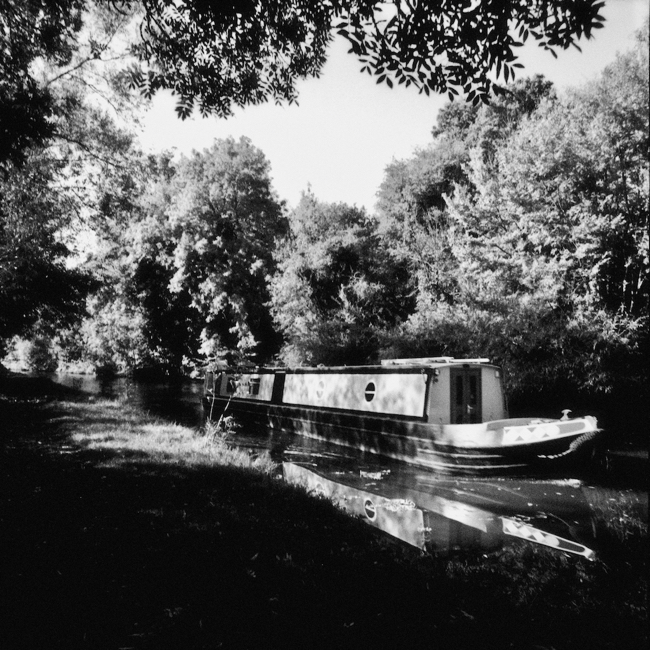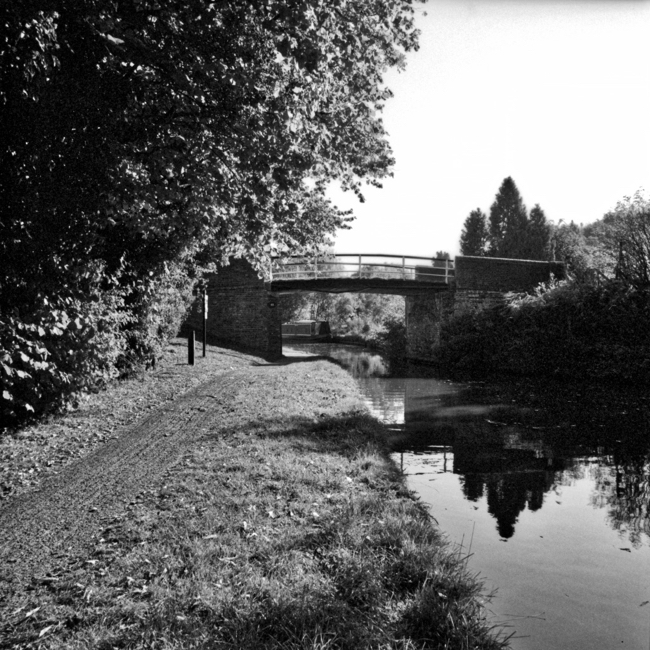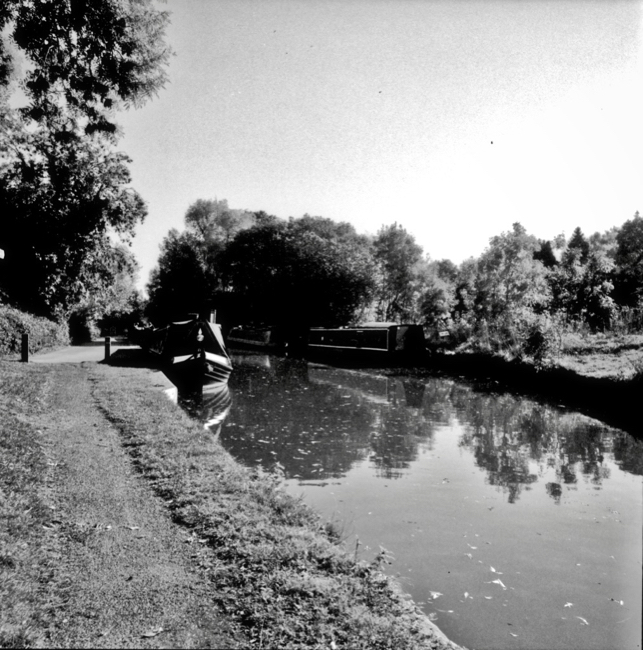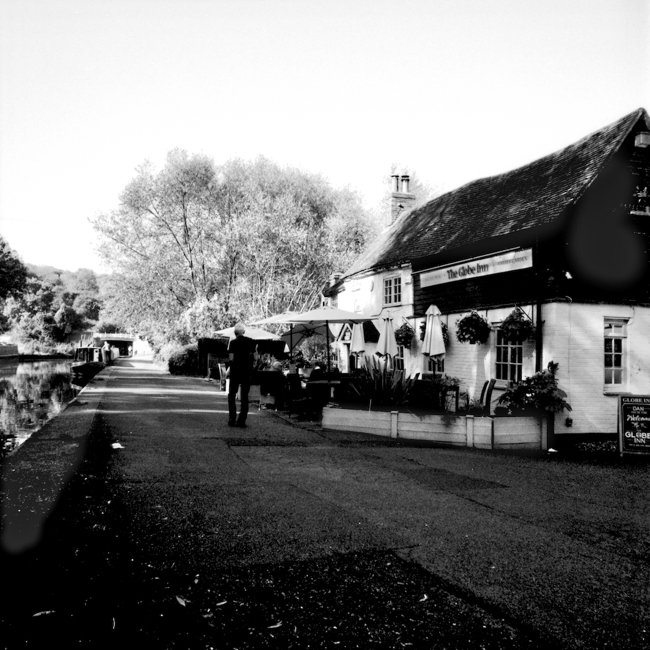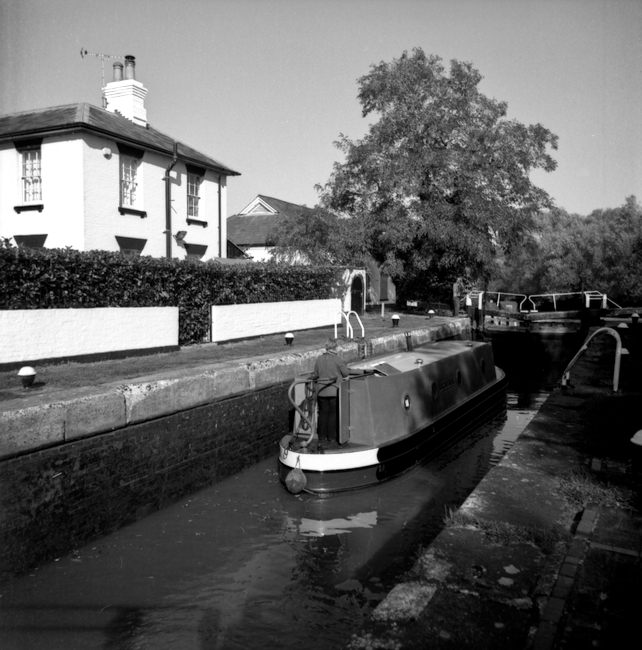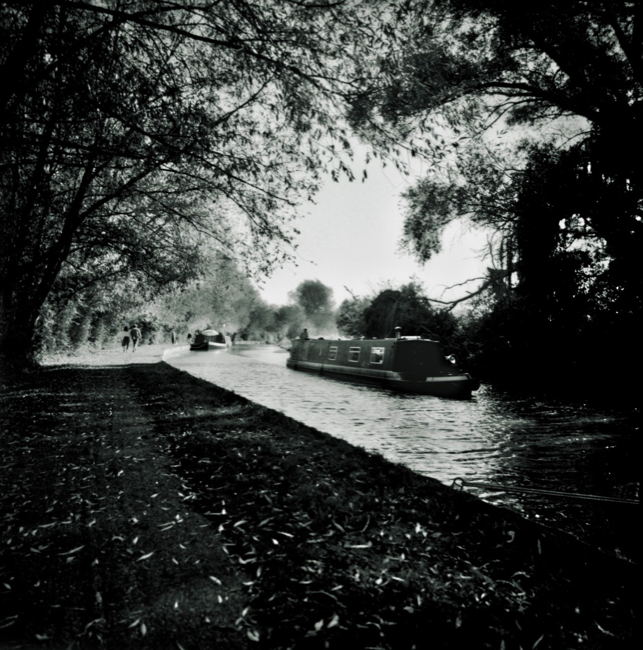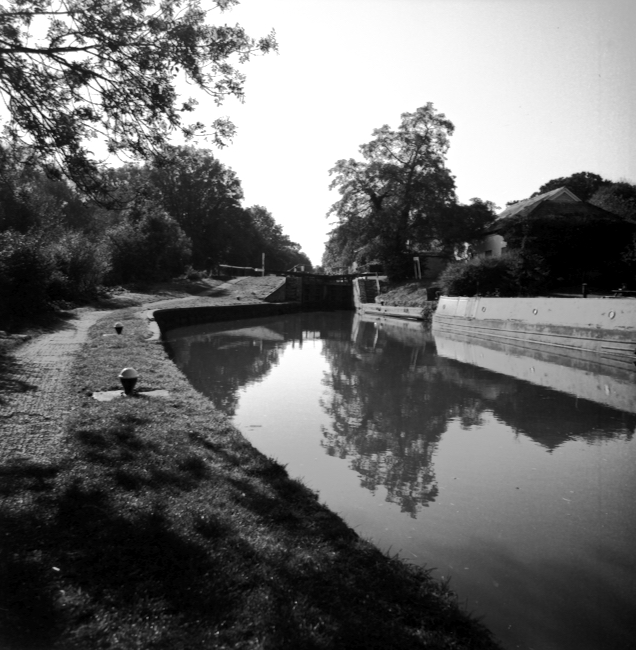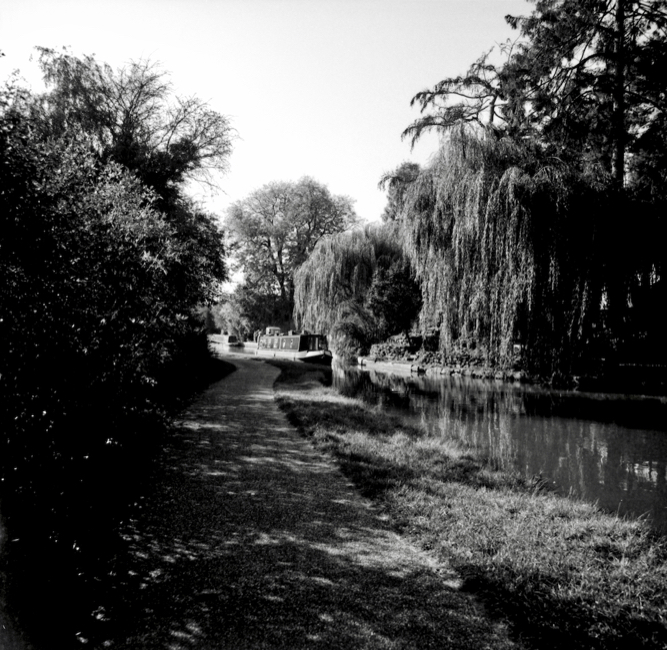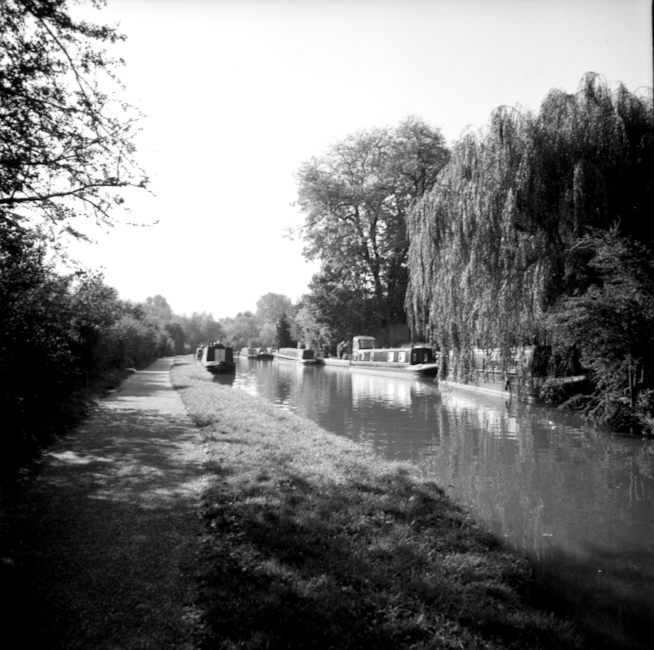|
|
eXtensions - Travels with Cameras, a Mac and an iPhone (7): The Hasselblad 500 C/MBy Graham K. Rogers
Background and EquipmentI came back from a trip to the UK just over a week ago. As well as my Nikon DSLR along with a collection of lenses, and of course the iPhone X, I packed my Hasselblad 500 C/M - a medium format film camera. I have placed a number of small images from this camera on this page. If exported full size, they would be 70" x 70" (I should print one out just to see). Unlike electronic gear which has to be in carry-on luggage because of the use of Lithium-Ion batteries, the Hasselblad is completely mechanical so, with a lot of bubble-wrap I put that in my suitcase in the middle of my shirts.
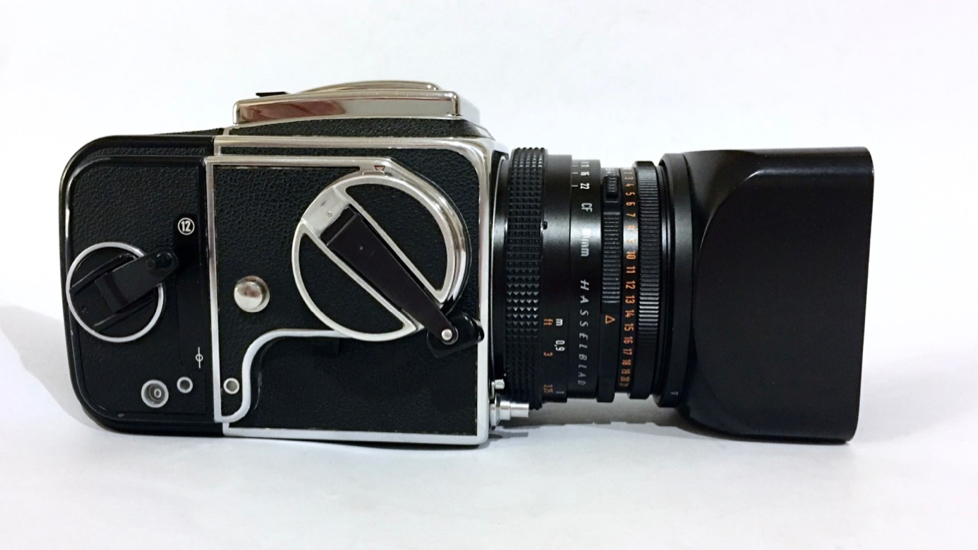
Hasselblad 500 C/M with 85mm lens
Tiddenfoot, Leighton Buzzard - Rollei 400 film
Didcot Railway Centre - Ilford PanF Plus (ISO 50) film
Didcot Railway Centre - Ilford PanF Plus (ISO 50) film
Film CommentsWhen I began to use the Hasselblad camera a couple of years ago, I tried Ilford 400 film as well as some Kodak Portra 400. The colour film results were poor and I have shied away from this since, although recently had another go. The poor results were from a specific shop which I no longer use, while AirLab has produced some good results developing the Kodak Portra.For the UK trip I was working solely in black and white. I had several rolls of Ilford ISO 50 which needs more light. I have had good results from shooting in Bangkok streets (at least during the day) where the sun is usually strong and there are good shadows. Although the weather in the UK was quite good (except for the one day of rain), patterns were a little different.
Buckinghamshire Railway Centre, Quainton - Ilford PanF Plus (ISO 50) film
I am quite happy with the results using the Rollei Retro 400S as this is a little more forgiving than the ISO 50 film in reduced lighting conditions I sometimes found in the UK. I am not totally happy with the plastic backing of this film. It is less rigid than all the Ilford films I use and curves when I put it in the scanner. The Ilford is much better behaved.
Tapir feeding time at Linton Zoo - Ilford PanF Plus (ISO 50) film
Plantation Road area, Leighton Buzzard - Ilford XP2 film
With the pink hue, I wondered about scanning (pink is the opposite of green in colour terms), but online found that the VueScan software I use with the Canon 9000 scanner I have has a specific colour setting. It was as easy as working with a colour film.
Old Linslade Road, Leighton Buzzard - Ilford XP2 film
ScanningI had never had success with negatives before I bought the Canon 9000 scanner, but this made it easy. Instead of the standard Canon software, that had to be downloaded anyway (my computers do not have disk drives these days), I went for Hamrick's VueScan, which is a little idiosyncratic, but does not take long to learn. There are settings for most types of film and it recognised the scanner on first use. It is updated regularly. There is plenty of information online, and queries are answered quickly.
Firs Path, Old Linslade Road, Leighton Buzzard - Ilford PanF Plus (ISO 50) film
Film TypesIn Bangkok there are a couple of places I go to buy film, although the selection has been limited. A shop that sells used film cameras in Thaniya Plaza (off Silom Road) has a fridge full of 35mm and 120 film. These are mainly Ilford 125 and 400, and Kodak Portra the last time I went. The prices are not becoming any cheaper.With the recent popularity of film, Lomo cameras have a certain attraction for some, and there are Lomo films available, mostly in Siam Discovery Center. I was not happy with earlier experiments with these films as they had X-ray damage. I am told that supplies have been improved. My most recent purchases (apart from what I picked up in the UK) have been from Camera Film Photo: an outlet in Hong Kong that despatches film quickly (a couple of days for my last order). There are just under 20 film makers represented, including the newly resurrected Kodak Ektachrome. As an aside, at a time when film is seeing a second life, it is also worth looking at a PetaPixel article by Oliver Kmia on Why Kodak Died and Fujifilm Thrived: A Tale of Two Film Companies. While writing this, I ordered 5 rolls of Bergger Pancro 400 that I have wanted to try for a while for $40.40, and another 5 rolls of the Ilford Pan F Plus ($30.50). Shipping brought the total to $83.60 (2830.18 baht). The order should be delivered within a few days. I noticed that the site has preloaded (35mm) disposable cameras with Ilford HP5 Plus (ISO 400) and Ilford XP2 Plus (currently out of stock). I may try these at some time in the future.
Grand Union Canal, Leighton Buzzard - Rollei 400 film
Working RestrictionsWith the poor internet connections I suffered where I was staying, it was not until I arrived back in Bangkok that I was able to start backing up to iCloud. As the RAW photos from the D850 I use are rather large, the 800 photos took around 36 hours before the updated albums were available on the iPhone. Photos uploads everything: even images that have been deleted. Once they are in the database, they exist (including in the Deleted folder) and must also be uploaded in case a user ever wants to Un-delete. If any items in the Photos section are put into albums, these are only updated when all other images are uploaded. In a way it is a guide that the processes are complete.I also took 7 rolls of film into AirLab near BTS On Nut for developing the day after I returned. A student put me on to this service and I am grateful for this. I collected them on Thursday and for two evenings, I scanned the rolls and edited the TIFF images in Photos on the Mac. Most of the time I use the basic tools, but also like to improve images using the Tonality Pro extension in Photos. I also made use of the Dodge and Burn Tools (lighten and darken) in Pixelmator Retouch with a couple of these photographs.
Grand Union Canal, Leighton Buzzard - Rollei 400 film
Labels are another feature of Aperture that have not found their way across to Photos. I have a collection of images taken with different types of film on the Hasselblad. If I want to reference the specific film the image was taken with, I have entered it in the information panel, but need to click on that for confirmation. Far easier would have been a color label: blue for PanFPlus, green for Rollei 400, Red for Ilford XP2.
The Globe Inn - Rollei 400 film and Linslade Lock - PanF Plus
Grand Union Canal, Leighton Buzzard - PanF Plus
Results and CommentsThe whole way of taking photographs has shifted over the last few years as was noted in that PetaPixel article by Oliver Kmia. There has been something of a resurgence of film in the last few years, but there has also been an increase in the number of young people I see carrying real cameras (not smartphones). I wanted to relearn skills that had been lost with the DSLR, including the idea of care: craftsmanship. Young people are also taking up film too and, as there are few new cameras (perhaps apart from Lomo) the used camera market has seen price increases, especially for Leica and other high end brands.With a DSLR and the iPhone I know what I am getting almost as soon as I have taken the photograph, although I enjoy careful editing to bring out the best in the images: something many might also consider, particularly exposure, contrast, white balance, crop and alignment.
Grand Union Canal, Leighton Buzzard - PanF Plus
A few months ago, Wim Wenders wrote a criticism on the state of modern photography. I put out my own comments on this, but did concede that much output is destined for social networking sites. I suspect that most photographs taken these days never see the light of day outside a computer or smartphone. As I plan to put out some of my recent work in print form, I first tried with the Printastic app and created a book online. I sent one to the family in the UK and two to myself (one for the office and one for home). I had used this service before and have always been quite satisfied with the results. It is a decent alternative to Instagram.
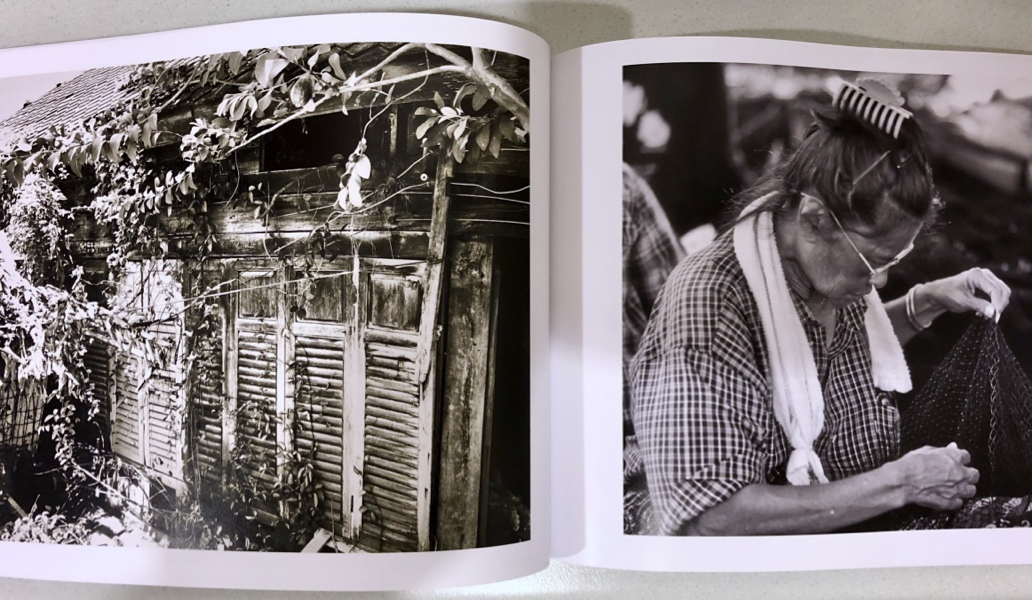 Photographs in a Printastic Book
Graham K. Rogers teaches at the Faculty of Engineering, Mahidol University in Thailand. He wrote in the Bangkok Post, Database supplement on IT subjects. For the last seven years of Database he wrote a column on Apple and Macs. After 3 years writing a column in the Life supplement, he is now no longer associated with the Bangkok Post. He can be followed on Twitter (@extensions_th) |
|

